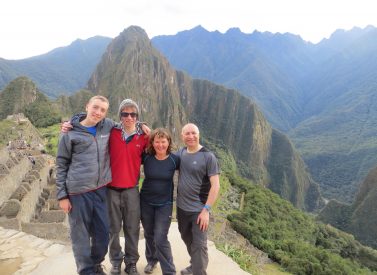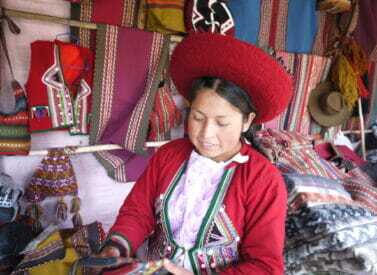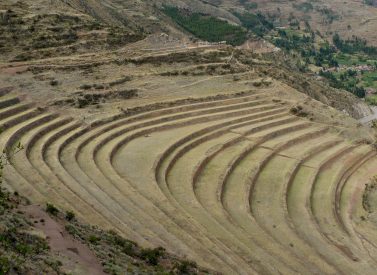
Cusco Active Tour
An active tour taking you from Cusco to Machu Picchu via the Sacred Valley.
We visit Cusco’s ruins, bike and raft in the Sacred Valley before undertaking the epic Inca Trail to Machu Picchu.
We can tailor this tour to your exact needs – more relaxing, no problem. More active? Easy.
More on Cusco to Machu Picchu tour
There is plenty of time to explore Cusco with a tour of the city’s sites and ruins.
Next, enjoy exhilarating days rafting on the Chuquicahuana river then mountain biking in Maras and Moray.
Next it’s the Sacred Valley where you spend time at the impressive market at Pisac before heading off to trek the classic Inca Trail to the magnificent Inca site of Machu Picchu.
We finish off back in Cusco. From where you can either return home, or we can arrange more tours to the Amazon, Lake Titicaca or wherever your adventurous spirit fancies.
Trip Highlights
Print Share Download as PDF-
See all the highlights in Cusco and the Sacred Valley.
-
Flexible itinerary - Cusco and Machu Picchu as you want it - you tell us, we'll arrange it.
-
Trek the famous Inca Trail to Machu Picchu.
-
All the logistics taken care of, so you just need to turn up and enjoy.
-
Markets, biking, rafting, ruins and more.
-
Suitable for active families.
Pre-departure service worked like a charm.
The trip went very well – everything was in order, like clockwork.
We were especially impressed by Jesus, your contact in Cuzco. He was exceedingly helpful and knowledgeable. Ensured that all the arrangements and connections worked perfectly. Highly recommended!
T. Moll, Cusco Active
Full Itinerary
Day 1: Arrive Cusco, transfer in to hotel
Arrive Cusco, and transfer in to your hotel. Archaeological capital of South America, Cusco and the surrounding region contain a wealth of archaeological and cultural treasures unequalled in the Old World.
Cusco is also a lively and exciting city boasting a wide range of restaurants and an active nightlife to suit everybody.
Nowadays Cusco’s main source of income is tourism, but it remains an important market town for the many farming communities that surround it. Street markets contain a huge range of highland and jungle produce.
Cusco is a beautiful city with a unique fusion of Inca stonework and elegant Spanish colonial architecture.
Day 2: Cusco ruins tour, hotel (B)
The attractions of the Cusco area are numerous.
Today you have a half-day city and sites tour, showing you the best of this famous and iconic city.
More about Cusco
Cusco is a beautiful city with a unique fusion of Inca stonework and elegant Spanish colonial architecture. Legend has it that Cusco was founded around AD 1100 by the first Inca king, Manco Capac, and his sister queen, Mama Ocllo, in AD 1100. He was the son of the Sun god (Inti) and she the daughter of the Moon goddess. They were sent to earth at Lake Titicaca with instructions to and civilise humanity.
Their travels took them to Cusco, where Manco Capac plunged his staff into the ground. This was the sign that he had found the capital of the new (Inca) empire. Archaeological evidence suggests that, for the first few hundred years, the Inca tribes kept within a short radius of Cusco with little conquering ambition. Only in 1438, with the arrival of Pachacutec (ninth Inca Emperor), did serious expansion begin and soon Cusco was at the centre of a rapidly expanding empire.
Pachacutec also masterminded the design of the imperial capital. The heart of the city was Huacaypata a large central plaza, and scene of all important ceremonies in the Inca calendar. This was surrounded by the sumptuous palaces of the Inca kings. The characteristic interlocking stonework of these Inca structures is today still much in evidence.
When Francisco Pizarro and the Spanish Conquistadores reached Peru, Cusco was the thriving capital of a flourishing empire. But an internicine civil war within the ruling family made its conquest relatively easy. The Spanish were impressed by the grandeur of Cusco, but spent little time admiring it before they began to loot it of its treasure.
From the time of Pizarro’s arrival until 1572, Cusco witnessed many battles of native resistance as well as power struggles between the colonists. The Spaniards’ appointed ruler, Manco Inca, soon realised he was no more than a ‘puppet’. In 1536 he led an attack on the city but, against all odds, the Spanish managed to break out of the besieged city and retake it. The Incas retreated to Vilcabamba, deep in the mountains to the north.
Tupac Amaru, the last leader of the rebel Incas at Vilcabamba, was finally captured by the colonial powers and put to death in Cusco in 1572.
Day 3: Rafting Chuquicahuana, Cusco hotel (B,L)
Set off early today for a day of fun grade II-IV rafting trip on the Chuquicahuana, sacred river of the Incas.
Full instruction and safety talk are given so no previous experience is necessary. Return to Cusco.
Day 4: Mountain biking Maras and Moray, Sacred Valley hotel (B,L)
Mountain bike trip through Maras and Moray, back down into the Sacred Valley, Ollantaytambo hotel.
On this mountain bike adventure starting at Chincheros above the Sacred valley you have the opportunity to see the small Andean village Maras, the amazing Inca site of Moray and Salineras, are extensive terraced salt mine. This trip is suitable for beginners and experience bikers alike.
There is a certain flexibility in the routes we take to suit ability.
It is approx. 5 hours of biking, with plenty of stops, and 35km.
There is a walking option available for anyone that prefers not to bike.
We spend the night in an Ollantaytambo hotel.
Sacred Valley
The Sacred Valley of the Incas, is the name given to the Urubamba Valley. It’s a scenic valley formed by the erosion of the Vilcanota River. This river is also confusingly called the Urubamba. The part of the valley which is referred to as sacred is around 100kms in which there are numerous villages that were of significance during Inca times, as administration centres or of ceremonial importance. The valley has a much warmer climate than Cusco, wealthy Cuzqueños often have second homes there for weekends away. It also is extremely fertile, producing some of the best maize in all of Peru. The principal places of interest in the valley are the small towns of Pisac and Ollantaytambo.
About Ollantaytambo
On the train line between Cusco and Machu Pichhu, Ollantaytambo is very much a highland Indian village with a strong community identity and a traditional, though changing way of life.
The town has an Inca street pattern, each block having a central courtyard with many houses around it and just one entrance onto the street. The great fortress of Ollanta still stands and is well worth a look around.
Day 5: Pisac market, Sacred Valley hotel (B,L)
Explore Pisac and the Sacred Valley.
In the valleys around Ollantaytambo the people make a living from farming and the herding of llamas and alpaca. The weavings of this area are particularly well known and the everyday wear of the local people is still handmade, with special elaborate clothes being made for festivals.
The designs are traditional, symbolic representations of flora, fauna, religion, folklore and history, though natural dyes are much less common now than they used to be.
There has recently been a revival in the pottery production, once important in the area, to feed the tourist market.
Day 6: Transfer to trek, hike to Huayllabamba, camp (B,L,D)
Today you’ll be picked up from your hotel by your Inca Trail group. You drive to just beyond Ollantaytambo, to start the trek.
Most of our groups have up to 16 trekkers with one main English-speaking guide and an assistant guide. Trekkers come from all over the world, and are of all ages.
At Chilca, where we start the trek, you walk down to the entrance, where your tickets are checked. Sign in, cross the bridge and make a left turn following the trail gently along the river bank until uphill we reach a eucalyptus grove and Llactapata – the first major ruins on the route. Vast retaining walls have converted the steeply sloping hillside into agricultural terraces: an amazing sight.
Just below Llactapata the Río Cusichaca, a tributary of the Urubamba, takes a spectacular plunge into the ground and runs through a subterranean channel for some way. The trail climbs steeply out of the ruins over a low pass, and the hike up the valley begins.
After about an hour you’ll reach a bridge, putting you on the other side of the valley, and will continue on to the village of Huayllabamba (3,000m/9,843ft). You will reach it in a further half hour. By this time it is likely to be very hot and you will welcome the cold drinks at the village which makes its living out of Inca Trail hikers.
First night camp with basic facilities.
Distance: 11.1km/6.9 miles
Highest point: 2,912m/9,554ft
Starting altitude: 2,753m/9,032ft
Finishing altitude: 2,885m/9,466ft
Height gained: 398m/1,306ft
Height lost: 302m/991ft
Day 7: Trek Huayllabamba to Pacamayo, camp (B,L,D)
We break camp and set off with our big target in mind – Dead Woman’s Pass!
Our path enters woods – first scrub, then very beautiful cloud forest where the trees are hung with moss. These fairy-tale woods will help keep your mind off the fact that you are still going steeply uphill with no sign of respite.
Eventually, however, the trees become more stunted and you emerge into a meadow, Llulluchapampa. From The Forks to the meadow is about two hours. This is the last campsite before the pass, aptly named (if you are a female hiker) Abra de Huarmihuañusqa, ‘Dead Woman’s Pass’ (4,198m/13,773ft), which you can see ahead of you.
It will take you about another 90 minutes hours to climb to the top of the pass. This is the highest point on the trail, so take heart – if you survive this, you’ll survive the other passes. Take time to look around you. You should be able to pick out the circular ruins of Runkuracay ahead, just below the next pass.
The descent is steep but not difficult. Just follow the trail on the left side of the valley to the valley floor and the next designated campsite at Pacamayo (3,600m/11,811ft).
Nearby are some huts with basic toilets and sinks built by the INC.
Camp for the evening.
Distance: 12.3km/7.7 miles
Highest point: 4,222m/13,852ft
Starting altitude: 2,885m/9,466ft
Finishing altitude: 3,603m/11,821ft
Height gained: 1,361m/4,465ft
Height lost: 613m/2,011ft
Day 8: Trek Pacamayo to Wiñay Wayna, camp (B,L,D)
From Runkuracay the path is clear over the second pass (Abra de Runkuracay, 4,000m/13,123ft) and, excitingly, much of the time you are on Inca steps. The descent down the steps is steep, so take care.
Just before the trail turns right, you’ll see the sign for Sayacmarca. These ruins lie about an hour from the top of the pass and the name, which means ‘the Inaccessible or Secret City’, is apt. You approach Sayacmarca up a superbly designed stone staircase. This is a diversion (the main trail continues its gradual descent to the right) but don’t let fatigue persuade you to miss it.
Like so many Inca ruins, no one really knows the purpose of Sayacmarca, but these are the visible facts: it was built on a precipice commanding a spacious view; there are no agricultural terraces so the complex could not have supported many inhabitants; ritual baths and an aqueduct run round the outside of the main wall; there are curious stone rings set in the wall by trapezoid openings. For us the mystery adds to the beauty, and it is beauty all the way from here – if you are fortunate with the weather.
The trail continues down to the valley floor. From here it becomes a glorious Inca Road, being on a raised causeway over marshy ground that then rises up through cloudforest. Stone paving on raised stone foundations, steps and a gentle gradient make for easy walking, and even if it is raining (and it does at times) you will marvel at the Inca workmanship.
Before the climb to the third pass there is a campsite with basic toilets. During the ascent you climb through two Inca tunnels, and if it is a clear day you will have the added bonus of a view of Salkantay over to your left. The pass (3,700m/12,139ft) is used as a campsite, but it gets crowded and water is some way below. Just below the pass, about 2 hours from Sayacmarca, are the impressive ruins of Phuyupatamarca. Access is down a steep flight of stairs. Clear water runs through the channels cut into the rock that feed five baths, leading one from the other down the hill (you may camp here).
An Inca staircase leads from the west side of the ruins (the far end from the baths) and disappears into the jungle, leading you down a thousand steps. Literally. You’ll think that your knees will never feel the same again.
The trek arrives at the campsite near the ruins of Huiñay Huayna (Wiñay Wayna). This is the last camping spot before Machu Picchu and it is often very full. Basic camping facilities, toilets, running water.
Huiñay Huayna lies just below the campsite, round to the right as you are descending, and is the most extensive of the ruins so far.
It has some beautiful stonework, a fantastic location, and an air of mystery often lacking in the crowded Machu Picchu ruins.
Distance: 12.9km/8 miles
Highest point: 3,893m/12,772ft
Starting altitude: 3,603m/11,821ft
Finishing altitude: 2,732m/8,962ft
Height gained: 1,185m/3,888ft
Height lost: 1,345m/4,413ft
Day 9: Sunrise at Sun Gate, Machu Picchu guided tour, Aguas Calientes hotel (B)
When we arrive there is plenty of time to take photos of Machu Picchu. We walk down through the site to the main entrance where you can safely leave your backpacks. You can also use the toilet and have a drink in the restaurant just outside the entrance. We head back into the site for a complete tour of the major sectors of Machu Picchu. The tour takes about two hours so by about mid-morning you’ll be free to continue to explore the ruins alone.
There are many restaurants in Aguas Calientes to satisfy all tastes and budgets. Of course you could also visit the hot springs that Agues Calientes is named for, which will help ease those aching muscles. Entrance to the springs costs US$5, and you should allow a couple of hours to fully enjoy them.
Distance: 7.9km/4.9 miles
Highest point: 2,739m/8,988ft
Starting altitude: 2,732m/8,962ft
Finishing altitude: 2,452m/8,046ft
Height gained: 311m/1,020ft
Height lost: 377m/1,237ft
Regulations (August 2011) mean that the number of visitors to Machu Picchu is limited to 2,500 people per day. This means that you must pre-book your entrance to the site. The entry ticket cannot be purchased in Aguas Calientes/Machu Picchu pueblo but must be bought in advance (by us) in Cusco.
On the 5 day Inca Trail if you wish to visit the site on your last day (day 5) you will need to reserve and pay for your entrance ticket at the time of booking. The cost is USD 80 per person.
If you wish to climb Huayna Picchu or Machu Picchu mountain, places now also have to be pre/booked and come at an additional cost.
Machu Picchu mountain has to be climbed before 11am, and there are two departure times for Huayna Picchu:
Group 1 (G1): 0700 – 0800
Group 2 (G2): 1000 – 1100
The price is USD 80 including the entrance fee to Machu Picchu.
This leaves you plenty of time at the site or to do one of the other walks nearby. In the afternoon, you descend to Aguas Calientes and your hotel.
Day 10: Free time, afternoon train to Cusco, hotel (B)
Free morning to explore further, and take the train back to Cusco to celebrate your achievement, hotel Cusco.
We don’t include the entry fees to re-enter Machu Picchu today. There are lots of other walks in the area, too.
Huayna Picchu mountain
A steep one-hour climb (360m above the main Machu Picchu ruins), much of which is up Inca stairs. The climb involves scrambling and requires a good head for heights as there are some drops and a set of steep stairs – with no railing.
The views from above are wonderful and certainly reward those who tackle it. It’s worth visiting the Temple of the Moon on the west side of Huayna Picchu mountain, 400m below the summit. There is some high quality Inca stone work inside a cave, once a sacred place. Climbing Huayna Picchu is popular and permits usually sell out, which means there will be 200 climbers for each time slot given.
Do not attempt this climb if you are concerned about suffering from vertigo.
Machu Picchu mountain
Just south of the site, and overlooking it, is a 650m climb up a well made Inca pathway (approx 1.5 hrs to top, 1 hr down) to the top of Machu Picchu Mountain.
There are some Inca constructions on the top that were probably for religious ceremonies, given the prominent position of the mountain. The hike takes you through lush forest, keeping a look out for interesting birds, flowers and snakes sunbathing on the path.
The views over the site a great and you can view the iconic Huayna Picchu as the backdrop to Machu Picchu, as well as the mountains beyond. It is attracting more and more people as an alternative to Huayna Picchu but is still a lot quieter.
Aguas Calientes River Walk
A very simple and straight forward, yet very enjoyable walk is the walk along the river in Aguas Calientes. Keep your eyes open, as otters and capybara have been spotted here before! Your hotel receptionist can point you in the right direction and once you are the river, you just walk along from there.
Day 11: Free day Cusco, hotel (B)
Free day Cusco, hotel.
Day 12: Tour ends or onward travel (B)
Transfer out, tour ends, or onward travel.
Prices From $2,250 / £1,829 per person
What's Included?
Hotels and activities as listed, Inca Trail, trains and buses, English-speaking reps in Cusco, entry fees for trips
What's Not Included?
International and domestic flights, tips, insurance, trip extensions, meals other than listed on dossier, alcoholic/soft drinks, second day buses and entry fees to Machu Picchu
Accommodation
Mixture of hotels and camping.
Hotels are 2-3* with private bathrooms.
Camping
We use four season tents, designed for all weather conditions, and with lots of space for you and your belongings.
If you travel solo and have a tent to yourself, it will be 2m long x 1.4m wide – a two person tent.
Those sharing a tent will be in a tent 2.2m long x 2m wide – a four person tent.
If you stay an extra night in Aguas Calientes, we add a 2* hotel but can book 3, 4 and 5* options on request (extra cost).
Toilet facilities on the standard trek
All of the campsites that we use have a toilet block with running water. Facilities have improved a lot on the Inca Trail in the last few years. If you do need to go the toilet when there aren’t any toilets then do so well away from the trail and water supplies; dig a hole, and take the paper with you in a bag to deposit in one of the several bins along the way, do not leave it to blow about in the wind. There are shower facilities at Wiñay Wayna on day 3 although these basic and most people wait until Aguas Calientes showers or their hotel in Cusco.
Tour Staff
Local English speaking Peruvian guides. You will also meet local guides with specialist knowledge.
Inca Trail
In Cusco you will meet Jesus Sucari, our local man on the ground, and he’ll answer any questions with a pre-trek briefing.
We operate the Inca Trail together with our Cusco partner, owned and managed locally, in accordance with Inca Trail regulations.
On the Inca Trail we employ local staff, who are paid fair wages. We provide free life insurance to all of our porters. Tented accommodation and meals are provided for all trekking staff as well as foam mats, sleeping bags and rain ponchos.
We have also provided the staff with trekking shoes. We try to ensure our porters carry a maximum of only 20kg. We offer them backpacks and they generally use back supports.
Additionally, each year we donate to the communities our Inca Trail porters come from. We ask the community what is most needed and usually we are asked to provide materials (books, pencils, paper etc.) for the children and the local school.
Most of the porters are farmers and cannot afford to pay for all of the materials their kids require for school. By trekking on the Inca Trail you are directly helping the families and communities of your porters.
Meals
Almost all dietary requirements can be catered for – please ask us for more information.
Breakfasts at hotels will feature teas, coffees and juices to drink, plus cereals, fruit, eggs, toast and jams etc.
While out on tours, we either supply a packed lunch of sandwiches, snacks, soup, fruit etc, or we eat at a local restaurant. These are often buffet style with soups, rice, pasta, potatoes and then puddings/fruit. Lake Titicaca features lots of fish and/or eggs.
Evenings are often free for you to choose to eat in a local restaurant. Bigger towns have international and local Peruvian options.
Inca Trail
Standard menu
A typical day’s menu would be something along the following lines:
Snack: Mandarins and granola bar
Breakfast: Porridge , bread, butter, jam, milk, coffee, tea, fruit juice and fruit salad.
Lunch: Wantan (deep-fried pastry filled with cheese and ham), quinoa soup, chicken with stir fried rice, corn salad
Afternoon tea: Biscuits, pop corn, coffee, tea, infusions.
Dinner: Vegetable soup, meatballs with gratin potatoes and rice, salad selection and swiss chard pie, fried bananas.
Special dietary requirements
People with special dietary requirements are well catered for. A typical day of vegan fare on the standard Inca Trail could be:
Breakfast: Corn bread, fruit salad, soya yoghurt, quinoa flakes, hot drinks.
Lunch: Vegetable soup; broad bean, carrot, mushroom and seaweed salad with “sancochadas” potatoes. Hot drinks.
Dinner: Vegetarian minestrone soup, sautéed green beans with soya meat, vegetables and rice, poached apples. Hot drinks.
Celiacs/gluten free diets are catered for by replacing rice and pasta with quinoa, canihua and quiwicha as well as special produce such as camote (sweet potato) bread.
Water on the trail
You will be provided with boiled water every morning, and evening – fit for drinking. There are always generous amounts available.
The sterilising tablets ‘MicroPur’ can be bought in most pharmacies in Cusco. With these you put the tablets in the water and then wait 40 minutes before drinking. Try to ensure that the mouth of the bottle is also fully sterilised, by tipping your bottle up and down and allowing sterilised water to flow out before you drink.
Activity Level
The majority of the trip is open to people of good mobility and health. We build in acclimatisation, and the first tours are not physically strenuous.
Rafting: These are grade 2-4 rapids which means they are open to any level and experience. Local guides will teach you how to paddle and all the necessary safety on the river.
Biking: While anyone can participate – including beginners – ideally you will be comfortable on a bike and have some experience of cycling. Most of the trails are downhill on gravel/forest type roads, with some gentle inclines.
The Inca Trail requires every participant to be well acclimatised to high altitude and to be in good physical condition.
We grade this as a ‘medium’ trek because of the high altitude and consecutive trekking days.
Trekkers ideally need to be used to walking while carrying a rucksack and ideally accustomed to walking several days in a row.
However, it is also open to first time trekkers who are in good physical shape.
Approximate walking times:
Day 1: 4-5 hours
Days 2 + 3: 5-7 hours
Day 4: 1 hour + tour (2 hours)
Practical Information
Introduction to Peru
Peru is the perfect holiday destination for adventure travellers that want an amazing variety of activity, geography and cultural travel experiences.
The breadth of travel experiences in Peru is breathtaking – from trekking in the Andes to Machu Picchu to the tropical jungle of the Amazon, and plenty in between.
The people of Peru make it a special destination too, with its colourful and traditional street life and friendly locals.
Geography of Peru
Peru is made up of 3 distinct geographical areas: the coast, the mountains and the jungle.
The costa or coastal region is a narrow ribbon of desert 2,250 km long, crossed by fertile river valleys flowing from the Andes. It takes up 11% of the country and holds more than 40% of the population.
The cold Humboldt current gives rise to a blanket of mist – the garua – which hangs above coastal cities like the capital Lima from May to November.
Heading east, you’re soon climbing above the garua and into the Andes. The sierra, or mountainous region, covers some 25% of Peru’s territory and contains 50% of the population. The sierra inhabitants are mainly Indigenous or Mestizo, and many still speak Quechua or Aymara.
The sierra contains dozens of 6,000-metre snow peaks and volcanoes, including Huascaran (6,768m) the highest mountain in the tropics. The deep valley basins contain most of the towns and arable land; the terracing and canal systems of the Incas and pre-Incas are often still used today.
The eastern Andes are heavily forested up to 3,350m and sweep down into the Amazon Basin.
Peru’s selva or jungle makes up almost two thirds of the country’s area, but holds only about 6% of the population: the only towns with significant populations are Iquitos and Pucallpa.
Weather in Peru
You can also read about the weather of Peru in our blog.
Peru is located in the southern tropics (latitudes 0º to 18º), but climate varies significantly according to season, altitude and region.
Lima & the coast
From May to October, Lima is often overcast, but with minimal precipitation. There are sunny spells, and it’s a fresh to pleasant 13-20ºC.
At the same time, inland areas and the north coast mid to high 20’s ºC.
November to April is generally warm and sunny and Lima enjoys warm temperature of 19-25ºC, with the coast averaging 22-30ºC.
The Andes
Climate depends largely on altitude. As a rule of thumb, below 2,000m climate is mild and above 2,000m warm clothing is required for evenings, nights and early mornings.
The Andean sun is very strong.
May to Oct (dry season in The Andes)
Cusco (3,300m): Average max/min temps: 22ºC /2ºC. Average 3 or 4 wet days per month.
Arequipa (2,380m): Average max/min temps: 26ºC /9ºC. Sunny more than 340 days/year with minimal precipitation.
On highland treks: Conditions are generally dry. However, at this time of year, expect a range of conditions within a single day: cold/freezing nights at camps above 4,000m, where pre-dawn temperatures can be -5ºC; warm, spring-like mornings and afternoons; and cold evenings.
Note that mountain weather can be fickle and localised, and that precipitation is not unknown in the dry season. Expect temperatures to swing between sun and shade, sheltered and exposed ground and with altitude gain and loss. A quick-setting sun means temperatures drop fast.
In the cloud forest, e.g. around Machu Picchu, daytime conditions are generally warm or hot, and evenings cool.
Nov to March/April (wet season in The Andes)
Cusco: Average max/min temps: 23ºC /6ºC. Average 13 wet days per month.
Arequipa: Average max/min temps: 25ºC /14ºC.
On highland treks: Wetter conditions, with cooler days and milder nights than dry season. Jan-Mar usually the wettest months.
The Amazon rainforest
Year-round, weather conditions are hot and humid and there is always the risk of rain
There is a ‘dry season’ in Tambopata and Manu between May and October. The average daytime high temperature is between 25°C and 34°C and the average nighttime low is between 16°C and 22°C. Heavy downpours typically occur every few days.
Around 80% of annual average rainfall – approx 2,000 mm in Manu and Tambopata and 1,400 mm in Iquitos – occurs in the wet season Nov-April.
On rare occasions, between May and September, cold fronts from Argentina – ‘friajes’ – can sweep into southwest Amazonia and push temperatures down to 9° C. (Friajes usually last between 1 and 3 days).
Kit list
Book with Andean Trails and get 15% off Páramo’s fantastic ethical and high performance outdoor gear.
Peru has a wide variety of climates, due largely to the huge altitudinal range it covers.
During the day hopefully, it will be generally sunny enough for shorts and T-shirts, though having a fleece and rain gear handy is advisable. It will get cold especially in the evenings, so bring a warm fleece jacket, a good waterproof and some warm clothes including thermal underwear, gloves, scarf and woolly hat as well as one set of smarter clothes for Cusco.
Machu Picchu does have some sand-flies and clients are advised to wear long trousers and long-sleeved shirts to avoid bites.
General: Towel, sunglasses with attaching string, peaked cap, water bottle & purification tablets, torch & spare batteries, insect repellent (high DEET content is best), swim suit, suntan lotion factor 30+ / aftersun, lipbalm, long sleeved shirt, trousers/jeans
Rafting: We provide wetsuit boot, wetsuits and splash-jackets. You just need; swimming costume, thermal top, towel and change of warm-clothes.
Trekking: Shorts, tee-shirts, warm fleece or down jacket, thermal underwear, warm hat, gloves, scarf, sweater (available in Cusco), waterproof raincoat & trousers, socks / underwear, trekking trousers, after trekking trousers & t-shirt, good / well worn -in walking boots, after trek shoes (sandals), trekking poles with rubber tips (optional), poncho and rucsack cover (optional)
Personal gear: Binoculars (optional), camera with spare batteries/memory cards/film, pocket knife, book, notepaper & pen (optional), music player or (e)book, money belt, personal toilet kit, spare glasses / lenses, personal first aid kit to include, painkillers, plasters (band-aids), moleskin, anti-biotic cream, general antibiotics (ask your GP), after-bite (tiger balm), anti-diarrhoea tablets, throat lozenges, re-hydration salts & personal medication, good head torch
ATOL holiday protection
Andean Trails has 25 years of experience of putting together the best South America holidays.
We pay a fee to the CAA for every licensable passenger we book since we hold an Air Travel Organiser’s Licence granted by the Civil Aviation Authority. In the unlikely event of our insolvency, the CAA will ensure that you are not stranded abroad and will arrange to refund any money you have paid to us for an advance booking.
We also offer ATOL (Civil Aviation Authority) protected holidays to give our customers peace of mind when booking and travelling.
When you buy an ATOL protected air holiday package from Andean Trails Ltd you will receive a Confirmation Invoice from us confirming your arrangements and your protection under our Air Travel Organiser’s Licence number 6275.
You can read more about ATOL, who is covered and what protections you have if not ATOL-covered, on our ATOL page.
What is ATOL?
The CAA’s ATOL scheme offers protection to your money and your holiday if you book with us. Not everybody is covered (see ‘Who is covered?’ for more), as you must purchase an ‘air package holiday’ with Andean Trails to be protected.
And ‘air package holiday’ is defined as including a flight and some ground services (hotel, transfer, trek etc). This is also known as an ‘ATOL-protected holiday’.
Who is covered?
To be covered by ATOL, you must book a flight and some ground services with us and be from the UK. If you are from the UK and only book ground services and no flights, you are not covered by ATOL (see below for more on how non-ATOL clients are covered).
If you are outside the UK and buy flights with us, you will be ATOL protected IF any of the flights booked with Andean Trails touches/stops in the UK at any point during your holiday package booked with us.
If you buy your flights elsewhere, please check with that agent if you are ATOL protected. Be careful with online flight purchases and make sure you know what protection you have, if any, before paying for flights.
Not all holiday or travel services offered and sold by us will be protected by the ATOL scheme. Please ask us to confirm what protection may apply to your booking.
For land only holidays not involving any air travel, in accordance with “The Package Travel, Package Holidays and Package Tours Regulations 1992”, all UK passengers booking with Andean Trails Ltd. are fully protected for the initial deposit and subsequently the balance of all money paid to us, arising from cancellation or curtailment of travel arrangements due to the insolvency of Andean Trails.
I’m not ATOL covered, what protection do I have?
If you are not ATOL covered, any payments you make to us go to a Trust account.
We can only access this money once your tour has been completed, meaning that if anything happens to Andean Trails Limited while you are on holiday, then your money is secure and you can either complete the trip or be able to make it home.
If you pay for your holiday with a credit card, some offer payment protection – please check with your cardholder.
You also should have cancellation protection written into your insurance (which we recommend you have at the time of booking) in case you need to cancel.
Peru’s Amazon Rainforest
Peru boasts in its Amazonian region a vast swathe of world-class tropical wilderness with several rain forest and cloud forest reserves which are home to an immense diversity of wildlife.
Accessible from Lima, Iquitos or Cusco, the Amazon jungle is just a short flight away.
In Peru’s southeast lies the extraordinary region comprising the Tambopata National Reserve and the Bahuaja Sonene and Manu National Parks, with the greatest animal and plant diversity anywhere in the world.
Whether you choose to base yourself at a comfortable lodge or enjoy a more demanding camping trip, you can be sure of a unique, exhilarating and unforgettable experience.
Arequipa & Colca Canyon, Peru
The beautiful colonial city of Arequipa is replete with history and culture, and is the gateway to the condors of Colca Canyon.
Nestled at 2,325m/7,627ft, the ‘white city’ sits at the foot of three tremendous volcanoes: El Misti (5,821m/19,098ft), Chachani (6,075m/19,930ft) and Pichu Pichu (5,542m/18,182ft).
Arequipa’s attractions include the Cathedral, Compañía de Jesús Church, Santa Catalina Convent and the Dama de Ampato (Juanita Mummy) Museum.
With a year-round spring climate and sunshine guaranteed for 300 days of the year, it is the perfect place to begin acclimatising before continuing upwards.
Nearby is the famous Colca Canyon. At hundred kilometres long, this incredible gorge is said to reach a maximum depth of 3,400m/11,155ft – twice that of the Grand Canyon.
An overnight tour to Colca gives you the chance to see the iconic, soaring condors of the canyon.
Cusco, Peru
Cusco is the archaeological and cultural capital of South America.
The one-time centre of the vast Inca Empire is a bustling highland city with bags of character.
Its whitewashed streets and plazas feature a fascinating blend of Inca and Spanish colonial stonework and offer endless possibilities for exploration.
You don’t have to venture far to find outstanding examples of high quality Inca architecture, including the monumental temple fortress of Sacsayhuaman.
There is also the fertile farming land of the Sacred Valley on the doorstep, with many Inca terraces, temples and fortresses, plus colourful local markets and small villages.
At night, Cusco offers an excellent array or restaurants and bars plus the continent’s best Andean folk music scene.
Kuelap, Peru
In the northeast of Peru lies Kuelap – the jewel in the massive archaeological crown of the Chachapoyas Cloud People.
The mystical structure of Kuelap – dubbed the Peru’s second Machu Picchu by locals – is 1,200 years old.
It features massive limestone walls towering 60 feet, pottery, bones and hundreds of mysterious round stone structures, and away from the crowds of other sites.
This is a remote area of sub-tropical valleys, half way down the eastern slopes of the Andes. The jungle is impenetrable, dense with low trees, bromeliads, bamboos, orchids and mosses.
Lake Titicaca, Peru
Lake Titicaca, at around 4,000m/13,123ft above sea level, is a vast shimmering body of water on the Peru/Bolivia border.
It is the world’s highest navigable lake, set against a breathtaking background of towering ice-covered Andean mountain peaks.
The islands and shoreline of Lake Titicaca support many Indian communities, including the well known floating islands of Uros and the more remote islands of Taquile and Amantani. Here, traditions are strong and it appears time really does stand.
Agriculture, fishing, knitting and weaving are important to the islanders and by staying a day or two you gain just a small insights into this traditional way of life.
Islanders welcome tourists into their homes and this is a wonderful opportunity to experience island life.
Lima, Peru
Lima, the capital city of Peru, is a vibrant bustling place with a wide variety of things to do.
Stroll or bike around the historic centre, visiting the many museums or just chilling out in a café or restaurant in Miraflores.
In Parque Kennedy you can sit outside in Parisian fashion and watch the world go by in cafes and restaurants, or walk to the shore and the cliffs overlooking the Pacific Ocean.
There are a number of artisan shops & market stalls, plus a big silver jewellery trade, and a burgeoning number of top end restaurants with delicious food.
The centre of Lima is home to impressive Colonial architecture – Plaza de Armas has the Palace, official residence of the president, on one side, and on another is the Cathedral.
San Francisco Church, home of the Catacombs, is well worth a visit, as is the Inquisition museum.
Machu Picchu, Peru
Nothing says Peru quite the way Machu Picchu does.
The Lost City of the Incas, perches dramatically on a ridge-top 400 metres above the Urubamba river. The extensive site, with its many terraces, temples and palaces, is set amid a beautiful landscape of deep gorges and thickly forested mountains.
When Machu Picchu was rediscovered early in the 20th century and cleared of forest, it was found to be very well preserved. It has since presented archaeologists with many unanswered questions regarding the role it played in Inca times.
The sense of grandeur, whether you arrive on the Inca Trail or not, is impressive.
Try to arrive early at the site to enjoy it at its best – and late afternoon can often see you almost alone in the ruins.
The Cordillera Blanca and Huayhuash, Peru
North east of Lima, the Cordillera Blanca offers fantastic mountain scenery and some of the best trekking and climbing in the Andes.
The Cordillera Blanca boasts dozens of peaks over 6,000 metres, including Peru’s highest Huascaran at 6,768m/22,205ft above sea level.
The Blanca range also contains the world’s largest concentration of tropical glaciers.
This is an ideal destination for treks, from just a few to 12 days or so and also an ideal starting place for learning or improving mountaineering skills.
The nearby Huayhuash mountain range contains a dazzling array of snow peaks including seven summits above 6,000 metres.
This is a trekking paradise with breathtaking majestic panoramas and stunningly remote and picturesque camping spots. There is no better place to visit to get away from it all.
Prices From $2,250 / £1,829 per person
Daily departures (except Feb when Inca Trail is closed)
Guide price, per person, shared room basis
Price based on four travelling together.
Upgrades available
Shorter/longer stays possible
Single supplement applies


Dates & Prices
Prices From $2,250 / £1,829 per person
Daily departures (except Feb when Inca Trail is closed)
Guide price, per person, shared room basis
Price based on four travelling together.
Upgrades available
Shorter/longer stays possible
Single supplement applies
Can’t find what you’re looking for? Get in Touch
+44 (0)131 378 5593
+44 (0)131 554 6025



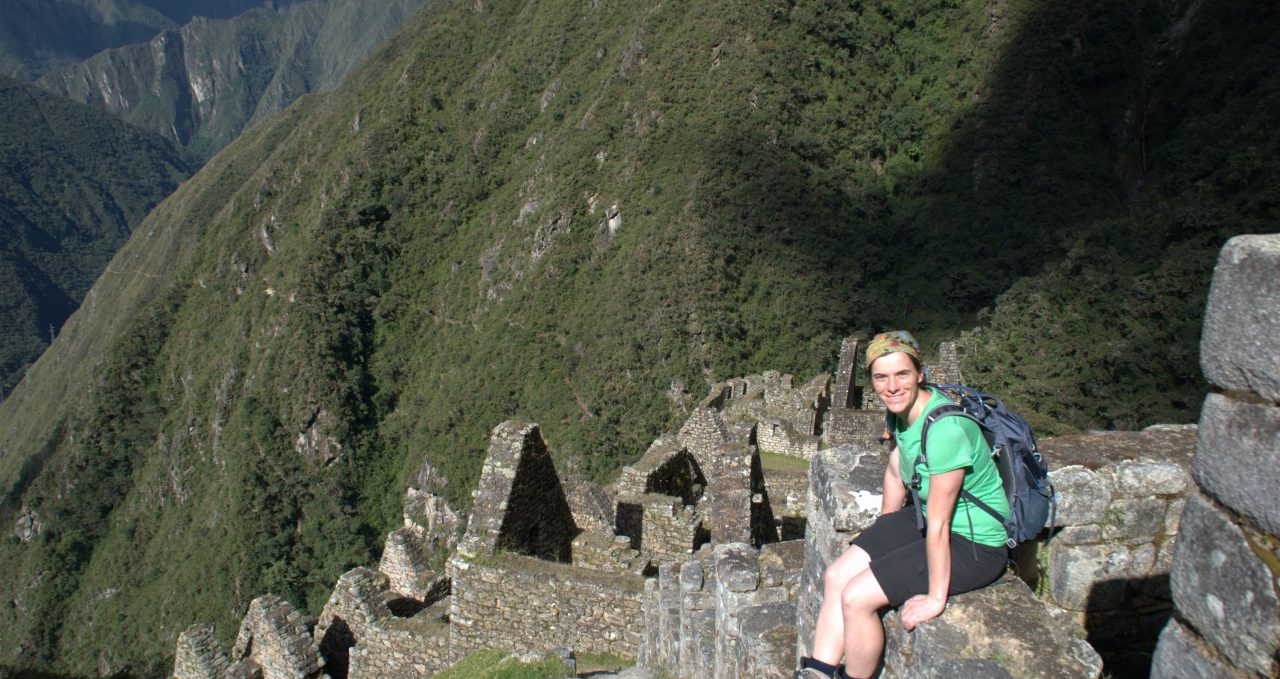
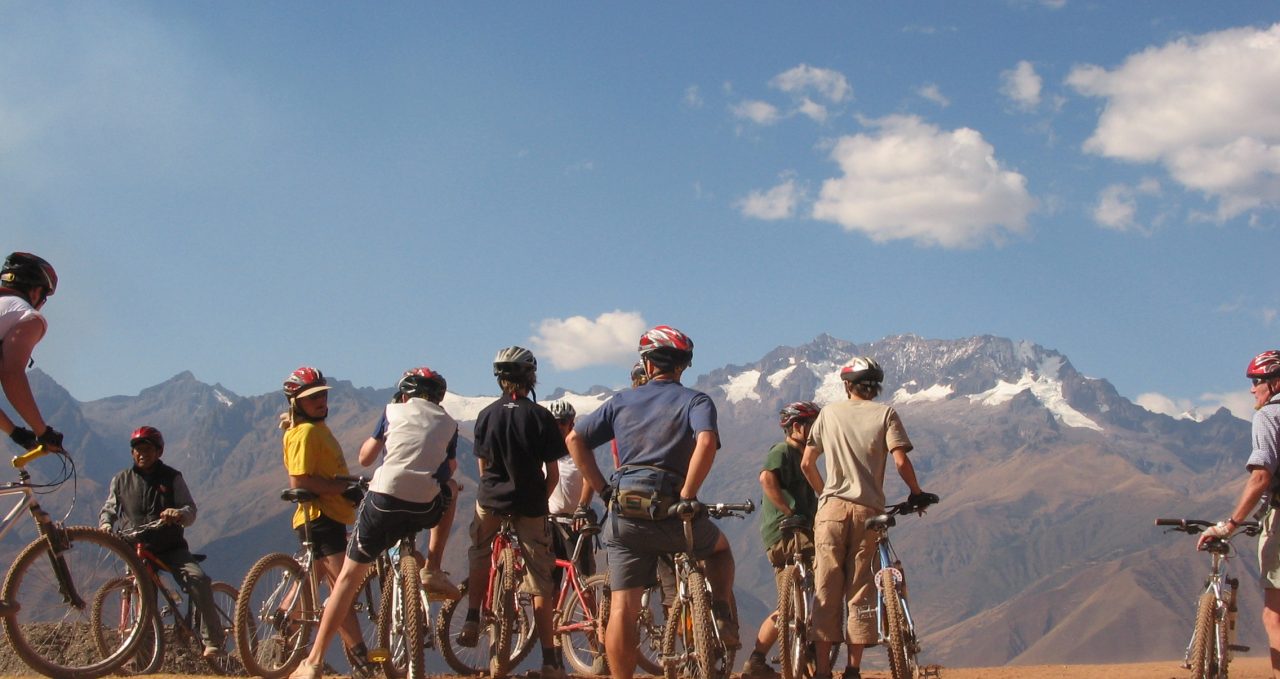
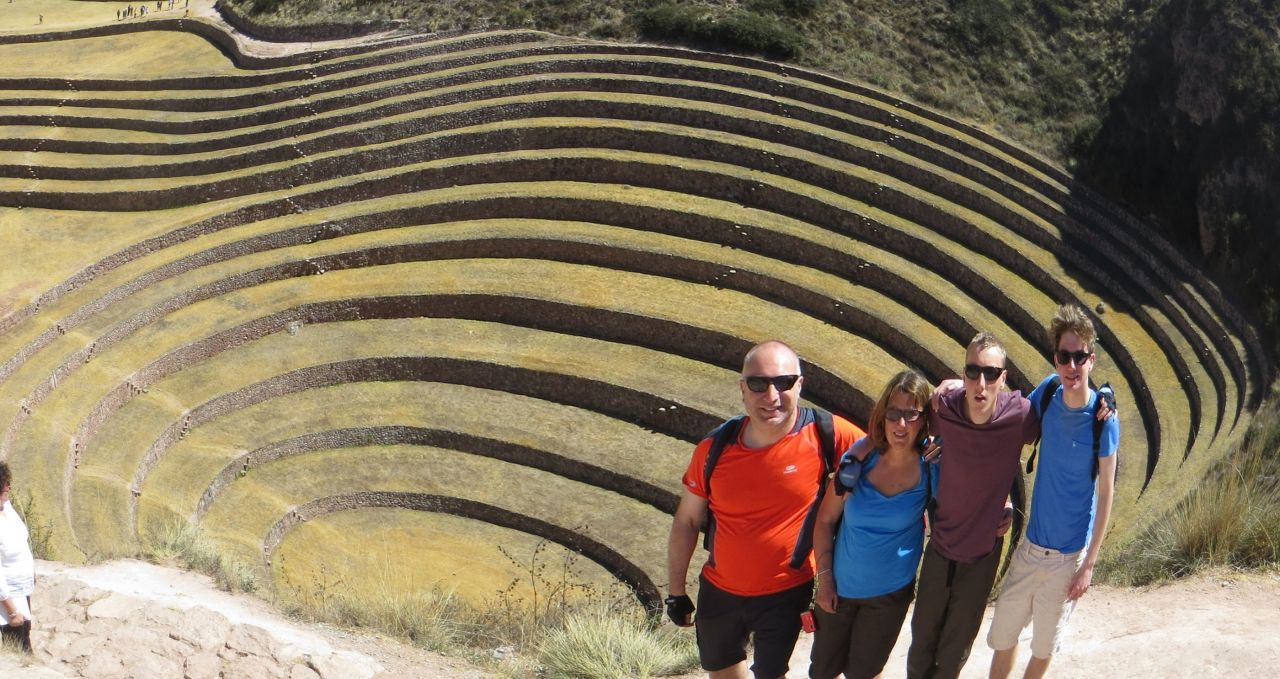
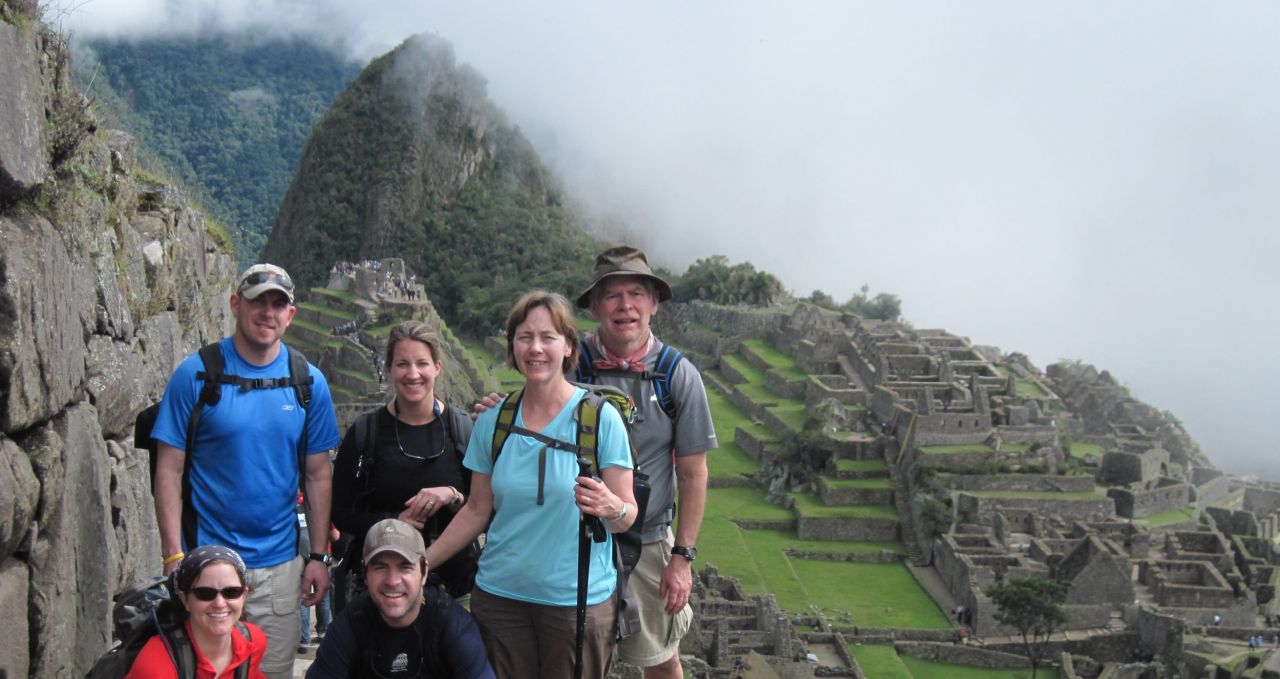
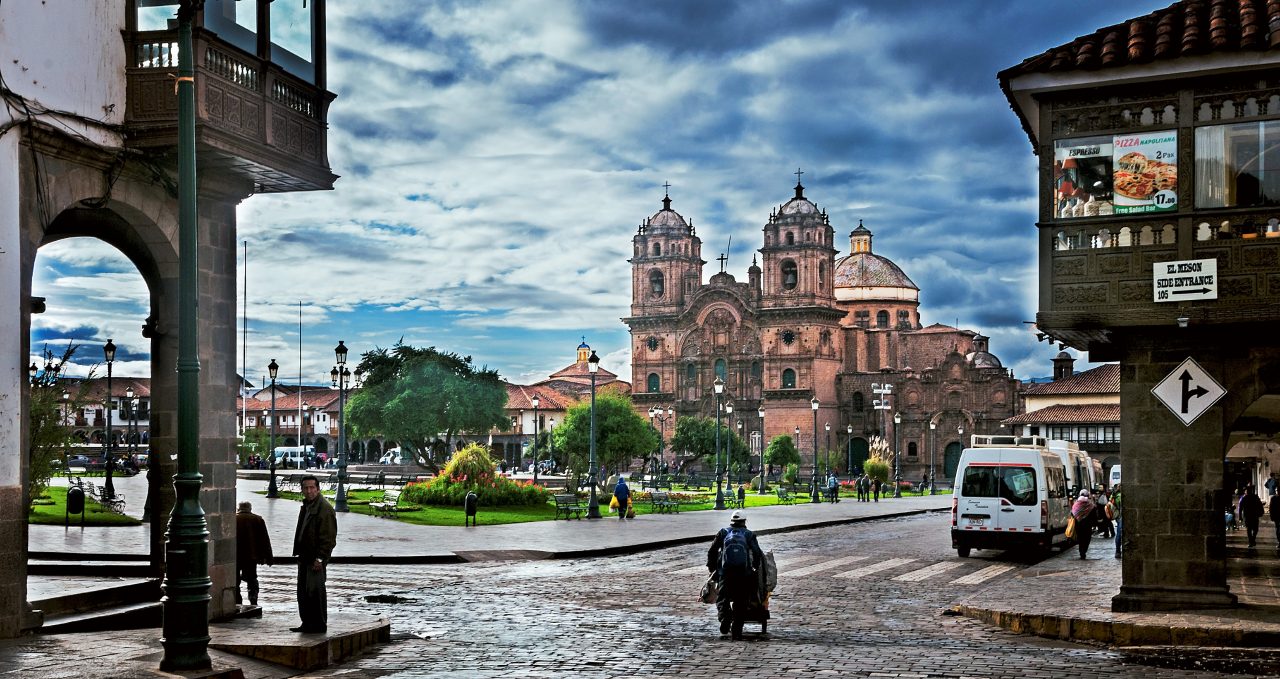
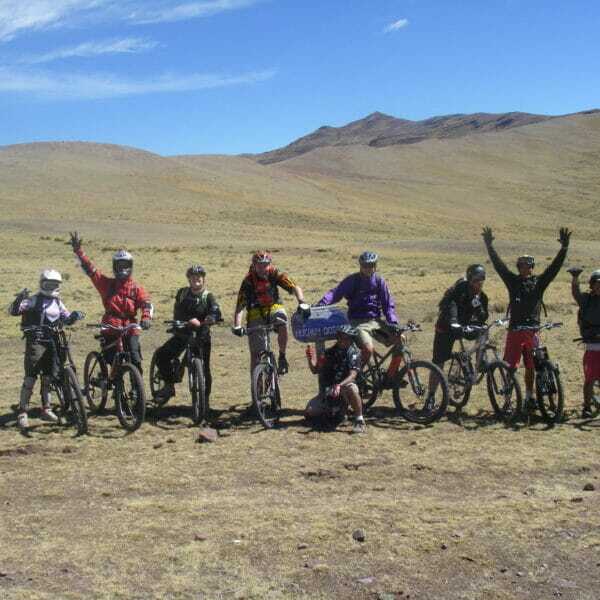
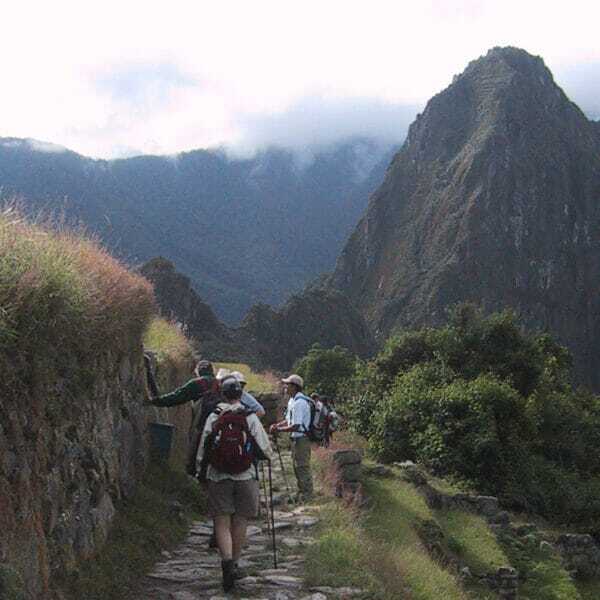
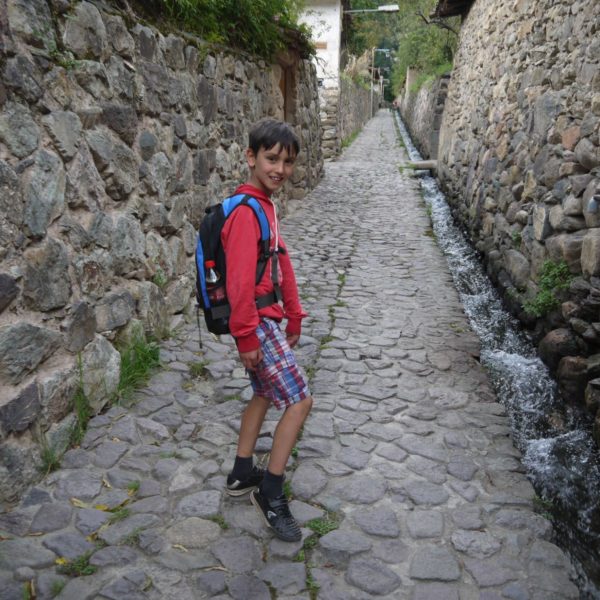
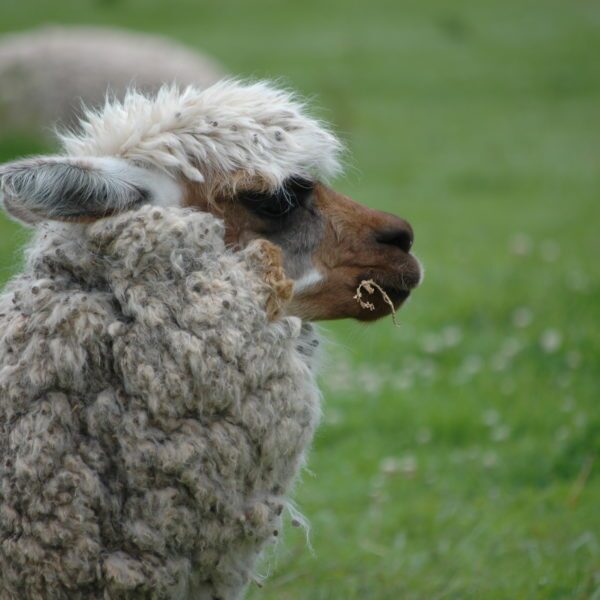
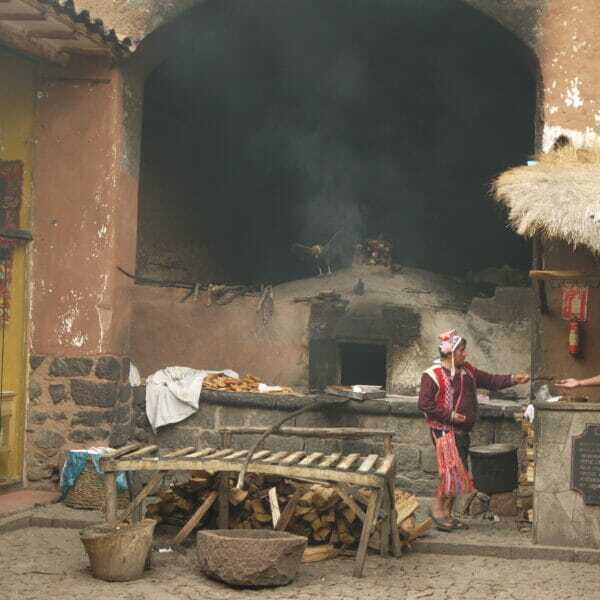
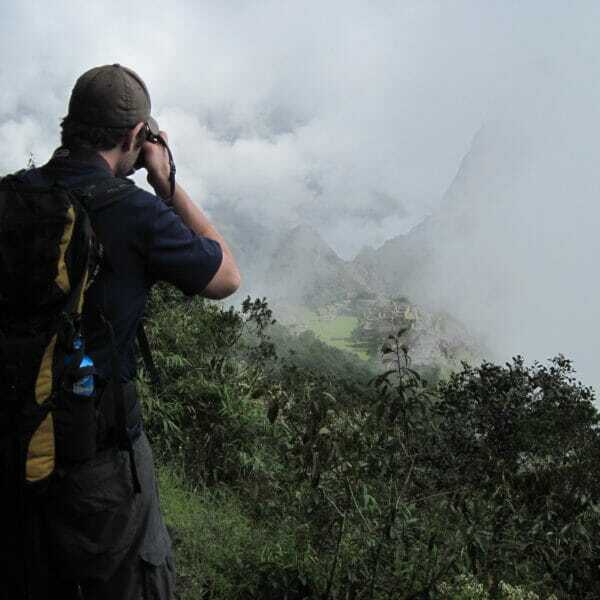
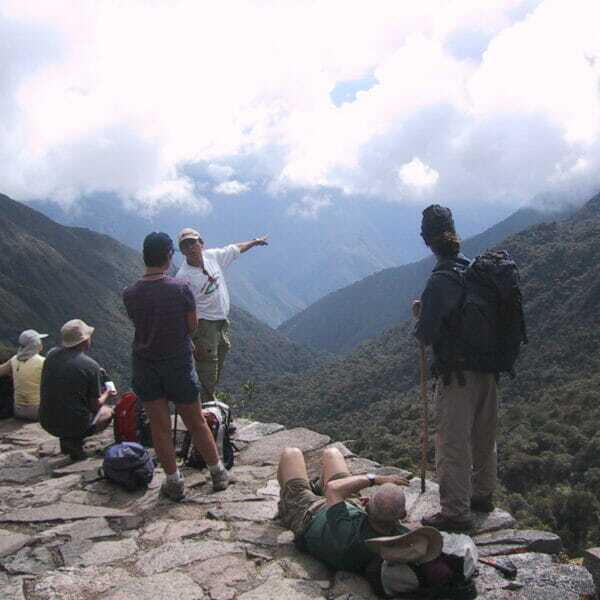
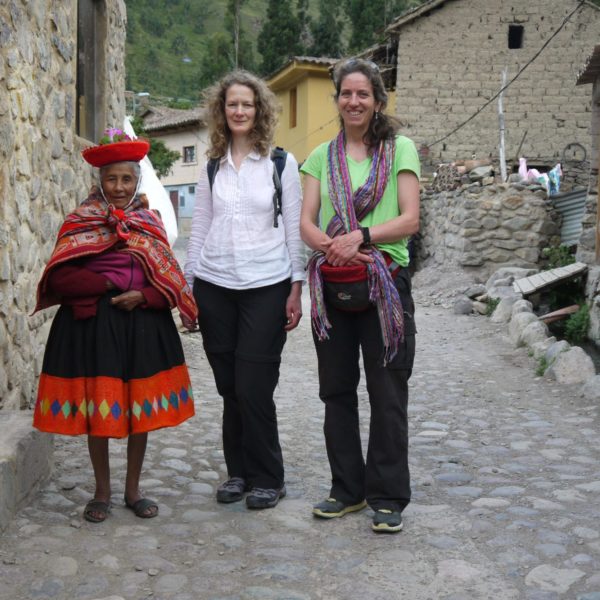
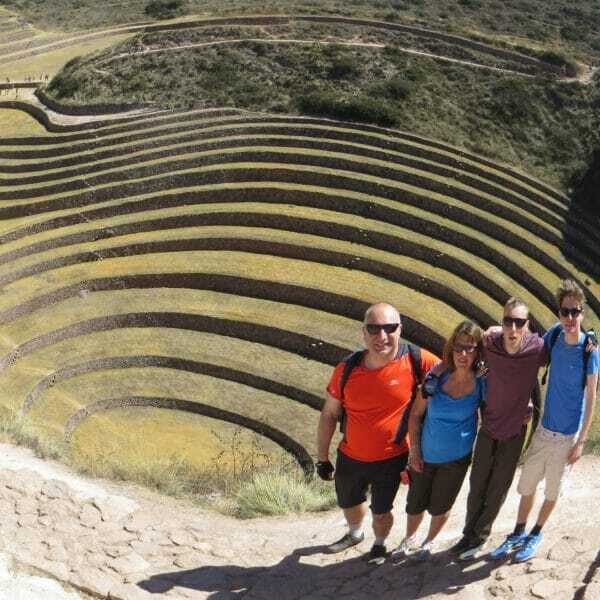
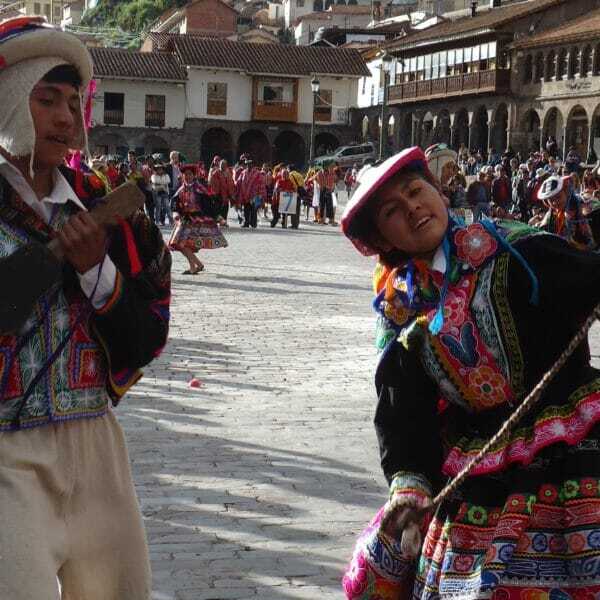
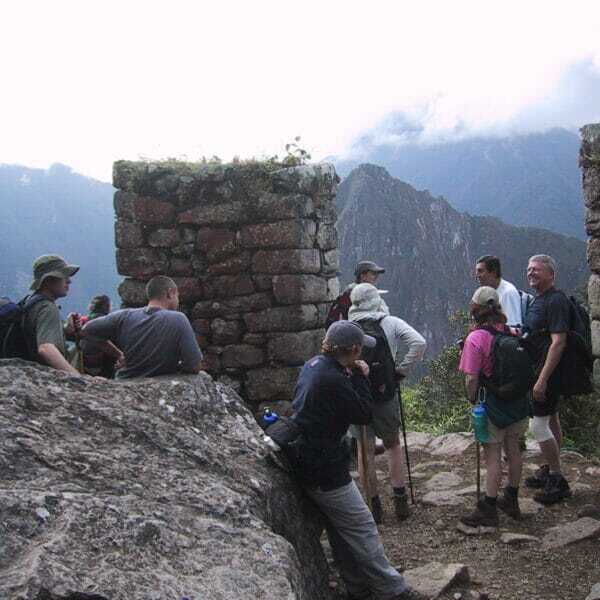
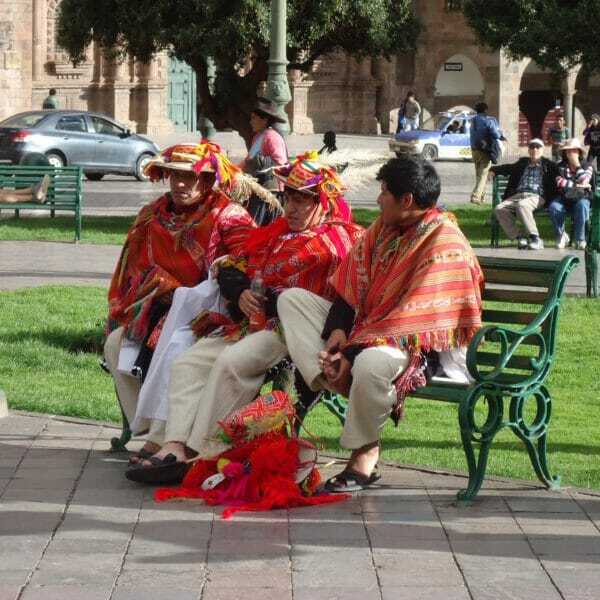
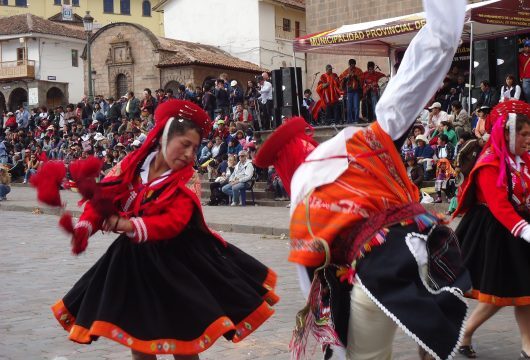
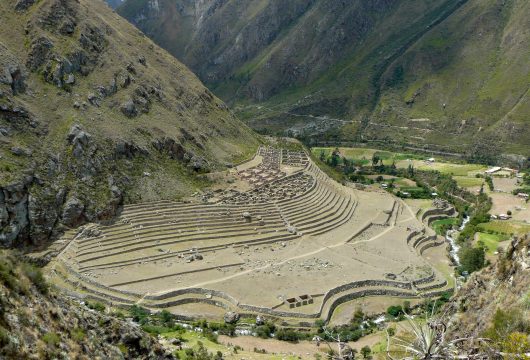
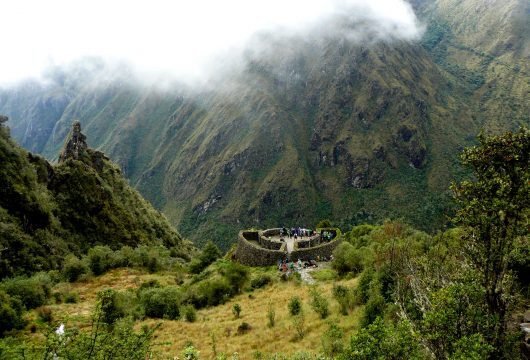
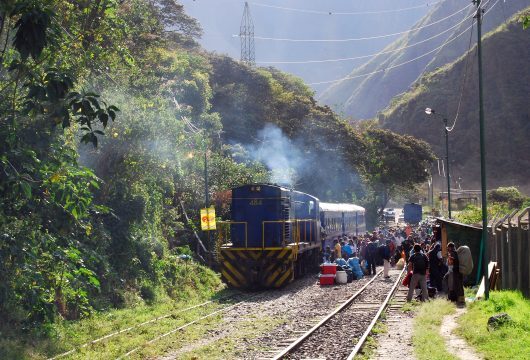
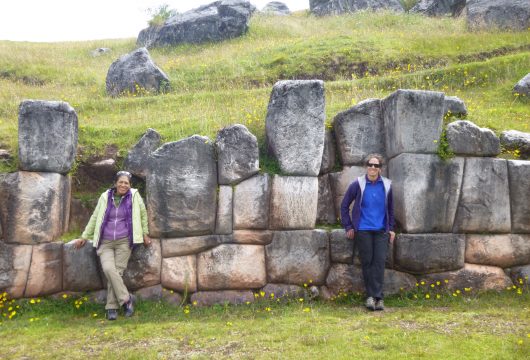
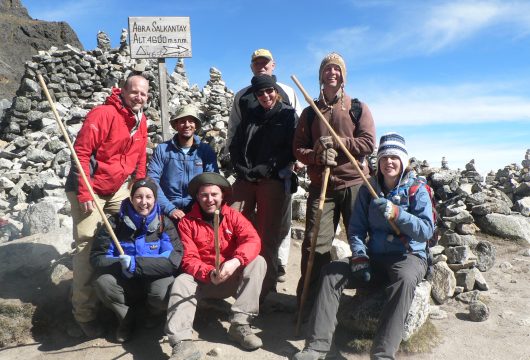
 a Tailor Made Tour
a Tailor Made Tour 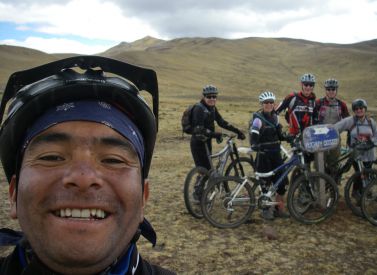
 a Group Tour
a Group Tour 